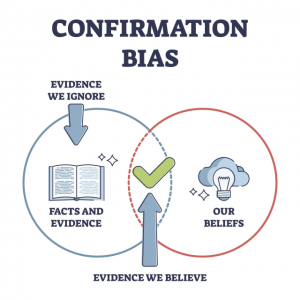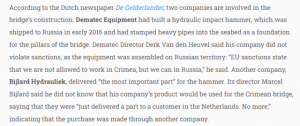The Russians build their bridges about as indestructible as they build their tanks
yeah it doesn't sound like they planned for movement.
They probably should have done something more like this:
https://greekreporter.com/2022/08/0...nging-the-economic-landscape-of-greece-video/
I had actually watched the video included in the link previously.
The basic problem is you can't win against tectonics, but designing something to move, when you need it to stay still is quiet difficult. It seems like the Russians took the straight forward method of just trying to make the bridge as strong as possible, but didn't accommodate for movement. Not surprising as its stated that the firm who built it hadn't done bridges before. I don't care how strong that bridge is, it isn't stopping tectonics. basically the ground is moving the bridge, whether thats just tectonics, or these mud volcanoes, ice flows, whatever, and the bridge is only trying to stay in place. so that movement has no where to go, so it finds a weak points and starts the cracks in the legs (based on these limited pictures).
a couple things stand out to me from my limited understanding of civil engineering.
1. I would expect the first cracks to be in the road way. They might have planned for this movement. That movement will happen in all three axial dimensions. good design would have movement points or isolation points to keep the road surface away from the bridge structure. they don't mention anything about the road surface, so maybe they accommodated for this.
2. the next point of failure would be sinking/rising. this would start at the foundations, but you would again see the cracking in the road as the vertical pieces are going to move as one, and the horizontal surfaces are going to move separately. So like a nail pulling out of a board by moving it, I would expect to see cracks ringing around whatever connection point there is between the vertical and horizontal. again they don't show this, so who knows if its happening, or been designed for. lets assume it has.
3. the vertical cracks in the vertical columns seem like straight up risky business. again I don't do bridges, I do buildings, so there are some forces at play that I don't deal with (traffic and water amongst others). But in a building this would be a sheer problem, the column is twisting on itself. this is the worst type of crack imo. the "typical" crack is horizontal. this is the weakest dimension (smallest), and would most likely result from forces applied perpendicular to the direction of the bridge. these aren't actually that critical of a failure until you get separation. The second type of crack would be diagonal/stairstep/spiral. Counter-intuitively these are from vertical forces, not twisting. again the vertical dimension is the strongest part of these columns, so vertical forces aren't going to cause vertical cracks (again its counter institutive). Instead those vertical forces will find the various horizontal weaknesses all along the height, and work to connect them vertically. Hence the stair stepping or possible spiral with the circular shape. because again the horizontal is the weak dimension. so vertical cracks in a round vertical structure (column) typically comes down to sheer forces, basically opposing forces in some axial dimension. they can show up in any axial dimension based on where the twisting is occurring. Imo this looks like the columns are trying to twist about their tall dimension. Likely the base is moving one direction, against the major counter force of the bridge in the other direction. Concrete doesn't like to move/twist, so what I think you are seeing for this crack is one half of the column structural points (base or connection to the bridge) is twisted compared to the other. and that crack is how much it is twisted. so if its a 2" crack, one of the hard points has twisted/rotated 2" from the other. this could be a case of both points moving 1" from each other. steel or wood would hold that twist, you could see how much they are warped, but concrete doesn't like that movement which is why there is a vertical crack (one vertical plane is moving/twisting away from the other) Which as I understand (watch the video in the link) is quiet common in bridge design dealing with these large span bridges. apparently there are different forces/the forces act differently as the relation to the span distance, and column height, and water depth change. basically each span (from column to column) has to be designed differently from the rest.
4. All concrete cracks, no matter what. they crack in all the ways I described above. this is known and accommodated for. so a crack in and of itself is not a concern. the concern is when you get separation between the cracked surfaces, clearly some here. Even worse when there is some offsets to that separation. no idea if there is also an offset here. from an architect's opinion (I am legally not qualified to design anything structurally more complicated than a single family house under 4000sf and 3 stories) these columns have lost some structural strength, but aren't critical/unsafe yet.
5. I have no idea how explosions, as the bridge has been targeted multiple times, would cause cracks (horizontal, stairstep, vertical). that was literally never part of my education so I won't even posit a theory on this.
IMO if this was a one off type thing, it might not be that bad. an earthquake/mud shift caused the crack but once its done its done. Concrete is either good, or its broken, there is no inbetween. so the fact that its still standing says its good right now. now if something changes, another earthquake, or if the movement is still ongoing you will see this get worse, and it could very quickly become not structurally stable. also how many columns have this type of cracking would also tell you a good bit about the problem. I would expect a series of columns all have vertical cracks, and this one is likely the worst, and they get better/less as you get further away from this column. if it is a one off it could be entirely local problem, and not a major concern, easier to fix, come up with a one off design for the specific problem, rather than addressing a systemic problem where you have to repair whole chunks of the bridge to keep this from spreading.


